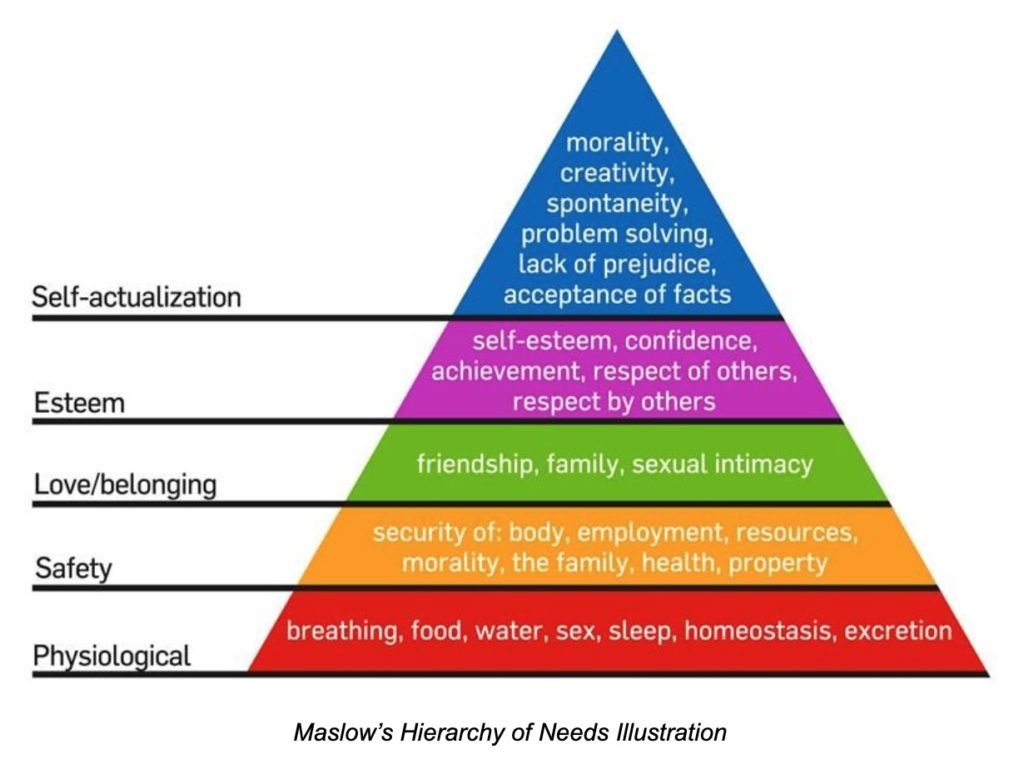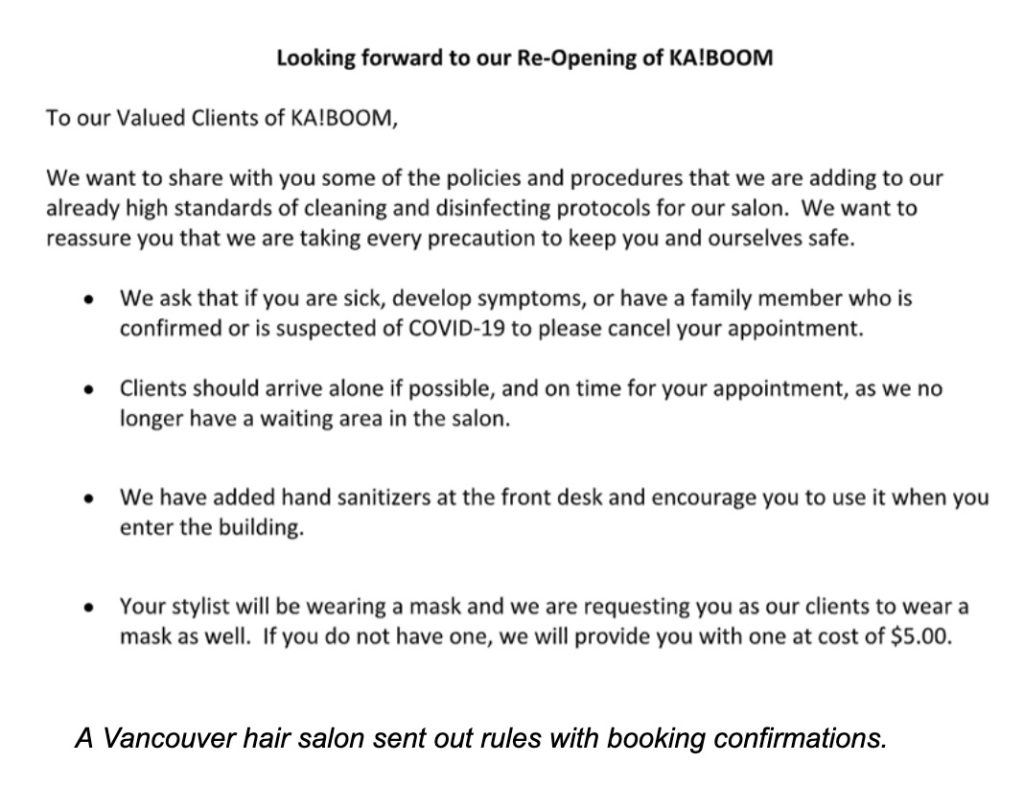Business
How to evolve your business model as times change
As business owners we want to emerge from the coronavirus pandemic not only in one piece, but as successful entrepreneurs who have learned some valuable lessons. As we enter a “new normal”, customer expectations have changed. Now is the time to change your business model to meet your customer needs. Here are a few ways you can pivot your business model to meet these new customer needs.

Are you prepared to meet new customer needs?
We’ve been forging our way through uncertainty for a few months now, and I have to say: small business owners are resilient.
In a time of stress and sadness we pivoted, we adapted, and I hope everyone, their families and their small businesses are OK.
I’ve written a lot about managing your small business during the pandemic, from “How to Pivot Your Small Business Strategy During the COVID-19 Crisis” to “How to Build a Crisis Response Landing Page”.
Now, we focus on the next step: emerging from the coronavirus pandemic not only in one piece, but as successful entrepreneurs who have learned some valuable lessons.
As we move forward, it’s obvious that some things are forever changed. In a recent survey, 81% of Canadians agreed that the crisis will create a new normal and have a lasting impact on society.
So as my province of BC, Canada starts to reopen businesses, it’s time to look at your marketing and evaluate if it still makes sense to your target audience.
How to define your customers’ needs
Let’s go back—all the way back to 1943, when Abraham Maslow proposed his hierarchy of needs. According to his theory, people are motivated to fulfill basic requirements (food, shelter) before they move on to more advanced ones (intimate relationships, sense of accomplishment).
During the coronavirus crisis, people were focused more closely on basic necessities like staying safe from COVID-19 and getting groceries. These differing needs may also have led them to buy things they wouldn’t normally buy, like lots of hand sanitizer or takeout food multiple times per week.

Some of the customer behaviour we saw during the pandemic may be here to stay, like:
- Continuing to wear masks in crowded areas and washing hands more frequently
- Thinking more carefully before buying “wants”
- Working/studying from home more of the time
- Choosing brands that are the most empathetic and conscious
So ask yourself: how have your customer needs changed during this time? What are they expecting from you?
How to evolve your business model to meet new customer needs
Just because we’re slowly returning to a “new normal’ doesn’t mean everyone is going to be hopping on planes and heading to big parties. Especially for those who have been personally affected by COVID-19, it’s going to be hard to reintegrate back into society, so to speak.
Here are a few ways you might have to pivot to meet new customer needs:
1. Maintain/increase communication around health and safety measures.
A large part of pivoting your business model will include how you communicate with your customers.
For example, salons and spas have been closed for months, and even once they reopen, consumers want to know what steps they’re taking to protect their health.
Some clients won’t feel comfortable stepping into a hair salon unless they know there are certain health measures in place.
Don’t be too hasty to remove your COVID-19 landing page or health and safety messaging from your website or Google My Business listing—rather look at updating copy with new information to put your clients’ minds at ease.

2. Address new patterns
If you’ve started offering heat-and-serve meals, curbside pickup or telemedicine sessions to customers, they may expect that going forward.
This can be a good opportunity to take a closer look at what worked and evolve your business model accordingly.
If you don’t sell essential services, you may have to pivot your marketing strategy to approach different spending behaviours. Many people have been hit hard financially and won’t have as much disposable income.
Others will have become accustomed to a new way of doing things. Similarly, to what I mentioned in #1, COVID-19 has changed the way that people consume certain services.
For example, a school may have to integrate more online learning into their model to attract students who are now used to and more comfortable with totally remote classes.
Many organizations are rethinking in-person conferences and other events. Will employees want to travel to huge convention centres to network with other attendees? Or, will they be happy with a virtual conference next year, too?


There’s no arguing this pandemic has led to increased internet traffic as people work, socialize, and entertain themselves online. But an increase in internet usage doesn’t necessarily translate into increased sales for your small business.
Many consumers are hesitant to buy, either because they aren’t sure when they’ll be able to use the service you sell, or because they’ve been laid off or have had their hours reduced.
That’s why I’m sharing 3 eCommerce challenges and solutions to help you maintain and even grow as an entrepreneur during this crisis.
How can you best meet new customer needs?
No matter how you evolve your business model, it’s important to remember that meeting your customers’ needs is an ongoing process. Whether it’s two weeks post-pandemic or two years, always:
- Listen, listen, listen. From monitoring your customer reviews, to sending out a questionnaire, it’s never been more important to take your customers’ feelings into consideration.
Listening on social media can also be a great way to “pulse check” how your customers are interacting with your brand and content. Then, use what you’ve learned to tweak your marketing strategy going forward.
- Always be engaging. I hope you’ve been doing this during the pandemic, but it’s also critical post-COVID-19. People will still be spending lots of time at home in the near future, so create uplifting, inspiring and/or informative content for your website, social media accounts, paid ads and newsletters.
Pay attention to changing trends in your industry and customer behaviour to guide your content strategy.
Here’s an example: during the pandemic, DIY was big—from home renos to crafts. Nielsen reported that sales of yeast were up nearly 650% from a year ago, as homebound folks baked up a storm.
So think about how your customers might be using your products or services and give them good content, whether it’s bread-baking tips or how to get out of debt.
No matter what your company sells, communicating with and reassuring your clients is still paramount. And remember: your customers can tell the difference between a sales gimmick and authenticity, so make sure you’re communicating value every time.
So what comes after the crisis? Nobody really knows for sure. But by pivoting your business model as needed now, you’ll be ready for whatever the future brings!
—
(Featured image by Free-Photos via Pixabay)
DISCLAIMER: This article was written by a third party contributor and does not reflect the opinion of Born2Invest, its management, staff or its associates. Please review our disclaimer for more information.
This article may include forward-looking statements. These forward-looking statements generally are identified by the words “believe,” “project,” “estimate,” “become,” “plan,” “will,” and similar expressions. These forward-looking statements involve known and unknown risks as well as uncertainties, including those discussed in the following cautionary statements and elsewhere in this article and on this site. Although the Company may believe that its expectations are based on reasonable assumptions, the actual results that the Company may achieve may differ materially from any forward-looking statements, which reflect the opinions of the management of the Company only as of the date hereof. Additionally, please make sure to read these important disclosures.

-

 Fintech2 weeks ago
Fintech2 weeks agoKraken Acquires Backed Finance to Boost RWA Strategy Ahead of 2026 IPO
-

 Biotech14 hours ago
Biotech14 hours agoSpain Joins First EU Joint Clinical Assessment Under New Health Technology Regulation
-

 Business1 week ago
Business1 week agoMarkets Now Appear Steady, but Cracks Are Forming Beneath
-

 Biotech2 weeks ago
Biotech2 weeks agoPharma-Biotech Program Showcases Spanish Innovation and Strengthens Biomedical Collaboration
























